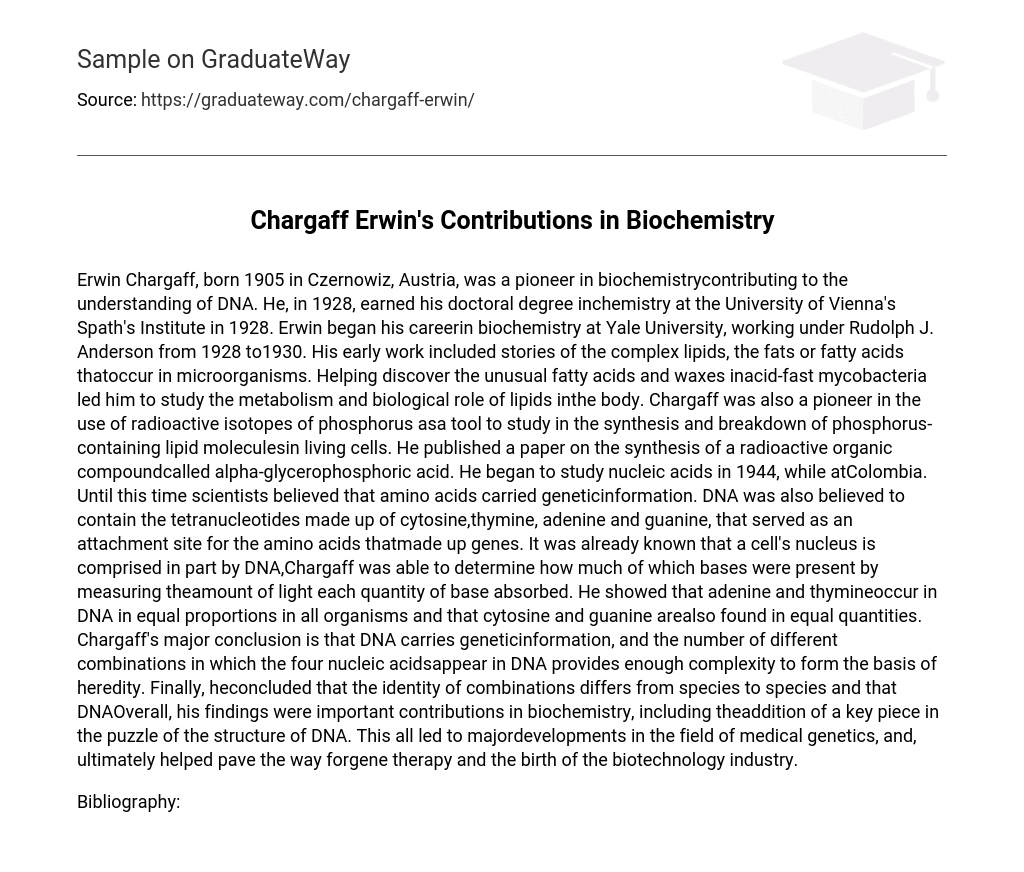Erwin Chargaff, born 1905 in Czernowiz, Austria, was a pioneer in biochemistrycontributing to the understanding of DNA. He, in 1928, earned his doctoral degree inchemistry at the University of Vienna’s Spath’s Institute in 1928. Erwin began his careerin biochemistry at Yale University, working under Rudolph J. Anderson from 1928 to1930. His early work included stories of the complex lipids, the fats or fatty acids thatoccur in microorganisms. Helping discover the unusual fatty acids and waxes inacid-fast mycobacteria led him to study the metabolism and biological role of lipids inthe body. Chargaff was also a pioneer in the use of radioactive isotopes of phosphorus asa tool to study in the synthesis and breakdown of phosphorus-containing lipid moleculesin living cells. He published a paper on the synthesis of a radioactive organic compoundcalled alpha-glycerophosphoric acid. He began to study nucleic acids in 1944, while atColombia. Until this time scientists believed that amino acids carried geneticinformation. DNA was also believed to contain the tetranucleotides made up of cytosine,thymine, adenine and guanine, that served as an attachment site for the amino acids thatmade up genes. It was already known that a cell’s nucleus is comprised in part by DNA,Chargaff was able to determine how much of which bases were present by measuring theamount of light each quantity of base absorbed. He showed that adenine and thymineoccur in DNA in equal proportions in all organisms and that cytosine and guanine arealso found in equal quantities. Chargaff’s major conclusion is that DNA carries geneticinformation, and the number of different combinations in which the four nucleic acidsappear in DNA provides enough complexity to form the basis of heredity. Finally, heconcluded that the identity of combinations differs from species to species and that DNAOverall, his findings were important contributions in biochemistry, including theaddition of a key piece in the puzzle of the structure of DNA. This all led to majordevelopments in the field of medical genetics, and, ultimately helped pave the way forgene therapy and the birth of the biotechnology industry.
Bibliography:





